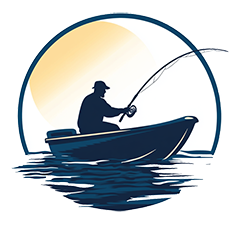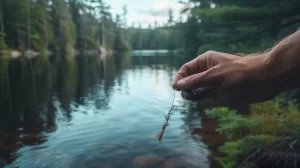In times of crisis or when stranded in the wilderness, the ability to fish for survival can be a fundamental skill that could mean the difference between sustenance and hunger. The art of fishing goes beyond just catching fish; it encompasses a deep understanding of aquatic ecosystems, fish behavior, and strategic approaches to securing a meal. As we explore the nuances of survival fishing, we uncover a world where instinct meets technique, where patience is rewarded, and where the ancient practice of angling becomes a lifeline in the face of adversity.
Table of Contents
Importance of Fishing in Survival
Fishing plays a paramount role in survival scenarios by providing a reliable source of protein crucial for sustaining individuals in emergency situations. In such circumstances, understanding local fish species and fishing techniques becomes imperative. Different bodies of water host various fish species, and knowing how to catch them can make a significant difference in securing food. Having the right fishing equipment is essential; items like fishing lines, hooks, and bait are vital tools for successful fishing. Moreover, knowledge of fish handling and cooking is equally important to ensure the safe consumption of the catch.
When it comes to survival fishing, actively engaging in different methods such as still fishing, jigging, or trolling can yield vital sustenance. These techniques allow individuals to target specific fish species efficiently, increasing the chances of a successful catch. Therefore, in a survival situation, fishing provides not only a means of obtaining food but also a sense of control and self-reliance in securing essential nourishment.
Active Vs. Passive Fishing Methods
Active and passive fishing methods offer distinct advantages and drawbacks in the pursuit of catching fish. Active fishing techniques require direct involvement and constant attention, demanding more effort and time from the fisherman. On the other hand, passive fishing methods allow for a more hands-off approach, relying on traps or nets to capture fish without the need for continuous monitoring.
Active Fishing Benefits
In survival scenarios, the choice between active and passive fishing methods hinges on the balance between energy expenditure and potential catch size. Active fishing techniques, such as casting a rod, spearing, or using bare hands, require significant time and energy investment but can be rewarding in terms of catch size. On the other hand, passive fishing methods like using nets or traps may yield larger catches with less active participation. The decision between these methods depends on the available resources, the need for sustainable fish populations, and the risk of overfishing. Understanding the benefits of active fishing, which include the ability to target specific fish and locations, is crucial for survival situations where maximizing catch size while conserving energy is paramount.
Passive Fishing Drawbacks
Considering the trade-offs between energy expenditure and potential catch size, passive fishing methods present distinct drawbacks when compared to active fishing techniques in survival scenarios. While passive fishing techniques such as setting up nets or traps can yield larger catches, they may be prohibited in certain areas to prevent overfishing. On the other hand, active fishing methods like casting a rod or spearing require more time and energy but can be more practical in various survival scenarios. Both active and passive fishing methods play roles in providing food during emergencies, but understanding the drawbacks of passive fishing is crucial for selecting the most effective fishing method in survival situations.
Essential Fishing Gear for Survival
An essential component of survival fishing involves equipping oneself with spinning rods, reels, hooks, lines, and soft plastic worms. These items are crucial in a survival situation as they form the foundation of a survival fishing kit. The fishing line is essential for connecting the hook to the rod and reel, allowing for the successful retrieval of caught fish. Hooks come in various sizes and types, each suited to different bait and fish sizes. Bait, such as soft plastic worms, is used to attract fish to the hook.
In addition to these basics, including jig heads, grubs, bobbers, and lures in your survival fishing kit can enhance your chances of catching fish without advanced equipment. Understanding how to improvise gear using natural materials like sticks, lines, and hooks can be invaluable in survival scenarios. While progressing to advanced gear such as gill nets, lures, and watercraft can significantly increase your efficiency in catching fish, starting with the fundamental gear is essential for survival fishing success.
Techniques for Catching Fish Without Equipment
Crafting handmade fishing tools and selecting natural bait are essential components of catching fish without traditional equipment. Hand-lining with improvised hooks made from thorns or shells can be a successful technique in securing a catch. Utilizing resources like vines for fishing lines and creating makeshift lures from shiny materials can significantly enhance the chances of a successful fishing expedition without the need for commercial gear.
Handmade Fishing Tools
Utilizing natural materials such as sticks, rocks, and vines, handmade fishing tools can be ingeniously crafted to facilitate the catching of fish without the need for traditional equipment. In a survival kit scenario, individuals can fashion a fishing line from plant fibers or threads to catch fish. Improvised hooks made from thorns, bones, or safety pins can be effective in securing a catch. Crafting a fishing spear using a sharpened stick or bone is a practical method for spearfishing. Additionally, homemade lures created from feathers, shiny objects, or pieces of cloth can attract fish towards the improvised fishing rod. These handmade tools demonstrate innovative techniques for catching fish in the wild without the reliance on conventional fishing gear.
Natural Bait Selection
In the realm of survival fishing techniques, the strategic selection of natural bait plays a pivotal role in attracting fish without the use of conventional equipment. Identifying local sources such as insects, worms, grubs, and small crustaceans is crucial as these options mimic the fish’s natural diet, increasing the likelihood of a successful catch. It is essential to understand the preferences of different fish species to choose the most effective natural bait. Experimenting with various baits can help determine the most attractive ones for the target fish. Additionally, presenting the natural bait effectively on hooks or traps enhances its appeal, enticing fish to bite. By mastering the art of natural bait selection, individuals can significantly improve their chances of securing a catch in survival fishing scenarios.
Methods for Preserving and Cooking Fish
Preserving and cooking fish effectively are essential skills for maximizing the nutritional benefits of this valuable food source in survival situations. In a survival scenario, understanding various preservation methods such as freezing, canning, smoking, salting, or pickling is crucial to ensure a sustainable food source. Proper fish handling is fundamental to prevent contamination and ensure safe consumption. When it comes to cooking techniques, it is vital to cook fish to a safe internal temperature to eliminate any harmful bacteria. Different cooking methods like direct heat, broiling, spit cooking, and ash cooking can be utilized based on the available resources and cooking preferences. By mastering fish preservation and cooking methods, individuals can make the most out of their catch, providing essential nutrients and energy for survival. Remember, the proper handling of fish from the moment it is caught until it is cooked is key to enjoying this nutritious and valuable food source in challenging circumstances.
Safety Tips for Survival Fishing
During survival fishing, prioritizing safety measures is paramount to mitigate risks and ensure a successful outcome in challenging environments. When engaging in survival fishing activities, always exercise caution around water bodies to prevent accidents or injuries. Using appropriate gear and equipment is crucial for ensuring safety, as it can help you navigate the fishing process more efficiently and safely. Additionally, it is essential to avoid consuming contaminated fish to prevent foodborne illnesses or poisoning. Stay vigilant and aware of your surroundings at all times while fishing for survival to avoid getting lost or encountering dangerous situations. Practice proper fish handling techniques to minimize harm to yourself and the fish during survival fishing endeavors. By following these safety tips and maintaining a proactive approach to prevention, you can enhance your safety and maximize the effectiveness of your survival fishing experiences.

